Related Topics
[Chromebook] Troubleshooting - Connectivity Issues with External Display on Chromebook
If you encounter problems with your Chromebook's connection to an external display, such as no image transmission or incorrect display, here are some simple steps to help you resolve the issue.
- Check the hardware devices of the external setup and connection cables
- Display scaling issues (Display image too large or too small)
- Screen sharpness and refresh rate
- Incorrect screen orientation
- Other issues with external display
Check the hardware devices of the external setup and connection cables
- Inspect the cable connecting your computer to the external monitor for any damage or defects. Try replacing the cable with a new one if necessary.
- Verify that the input source setting on the external monitor matches the connection cable/port you are using. For example, if you are using an HDMI cable to connect your Chromebook to the external monitor, ensure that the monitor's input source is set to HDMI input. Also, check if the resolution and refresh rate of the external monitor are compatible with your Chromebook.
- Test the external display with a different computer. This will help determine if the issue lies with the display or the computer itself.
- If you are using a docking station (adapter) to connect your Chromebook to the external monitor, make sure to inspect the docking station for any issues as well.
- Please note that not all USB Type-C ports can output video. If you are using a USB Type-C connection to the external display, refer to this article to confirm if your USB Type-C port supports video functionality: How to Determine the Functionality of USB Type-C.
Note: If you receive an error message stating "Cable may not support display," it indicates that your USB Type-C cable does not support this connection type. Please replace the cable with a SuperSpeed USB Type-C cable rated at 5 Gbps or higher and ensure it has one of these certified logos.
Display scaling issues (Display image too large or too small)
If your Chromebook's external display shows images that are too large or too small, you can adjust the display size for optimal viewing. Please follow these steps:
- Click on the [Status bar]① in the lower-right corner of the screen, then click on [Settings]
 ②.
②. 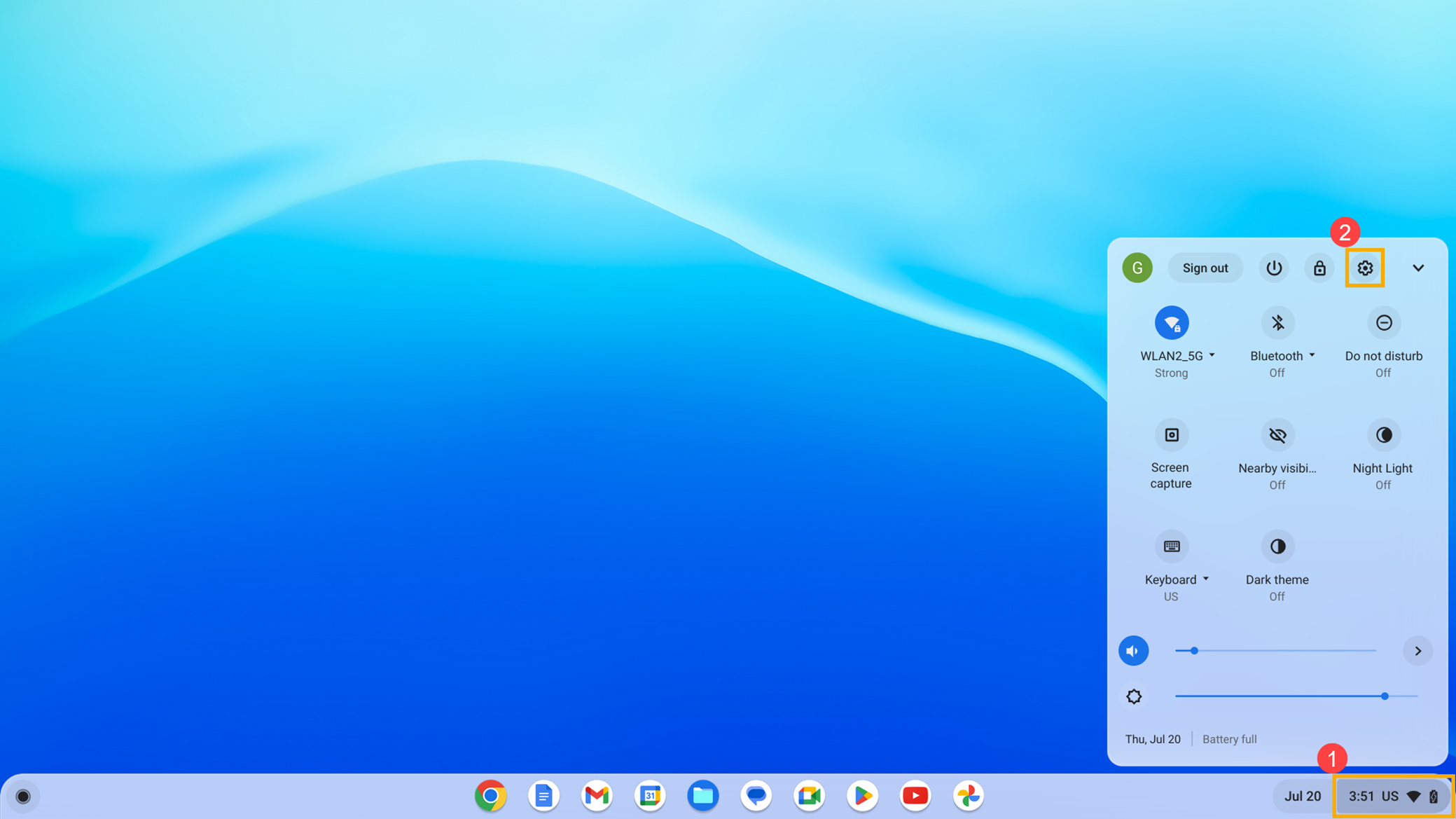
- Click on [Device]③, and then click on [Displays]④.
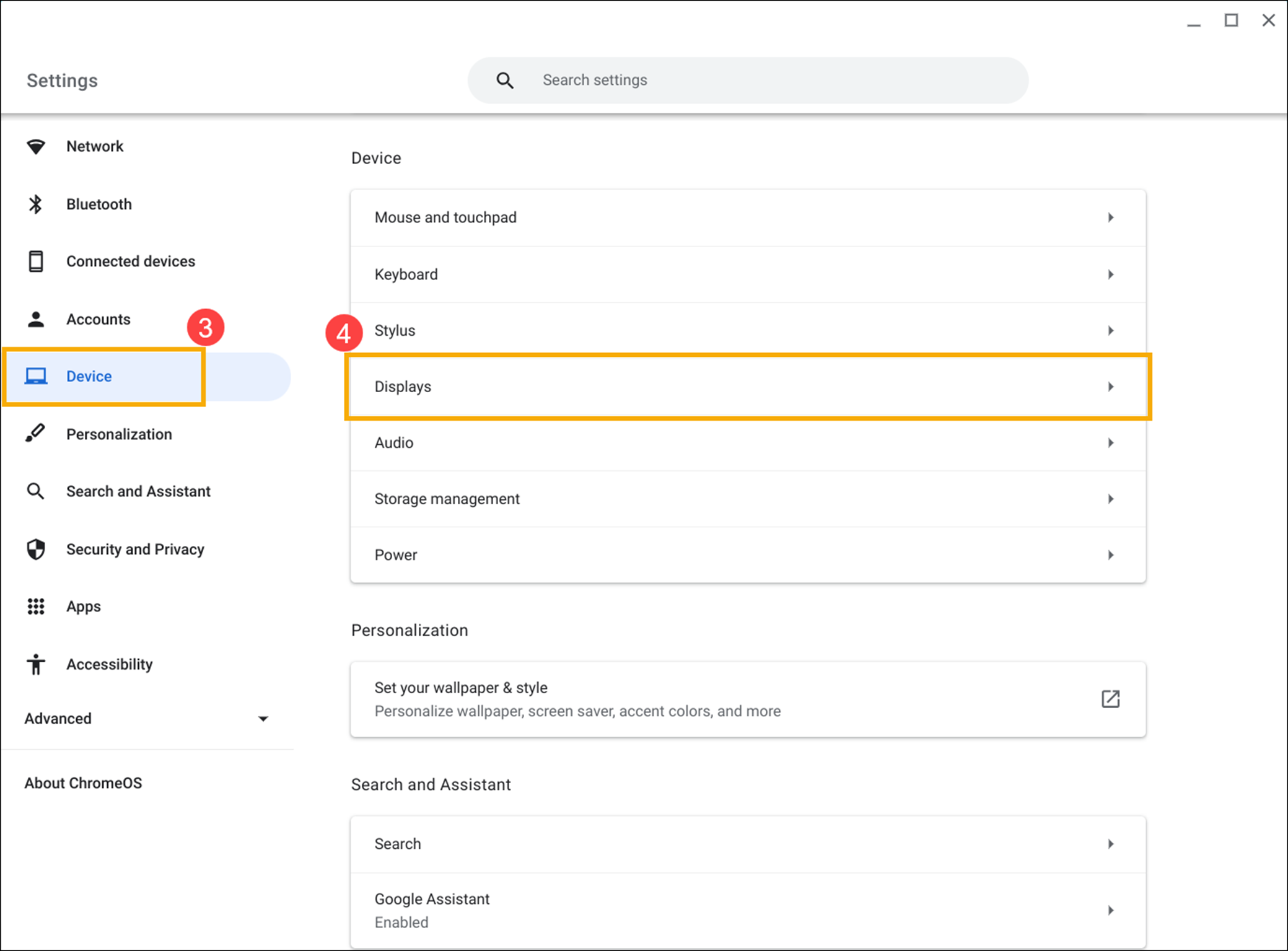
- Select the name of your external display⑤, and in the Display size field, you can drag the slider to shrink or enlarge items on the screen⑥.
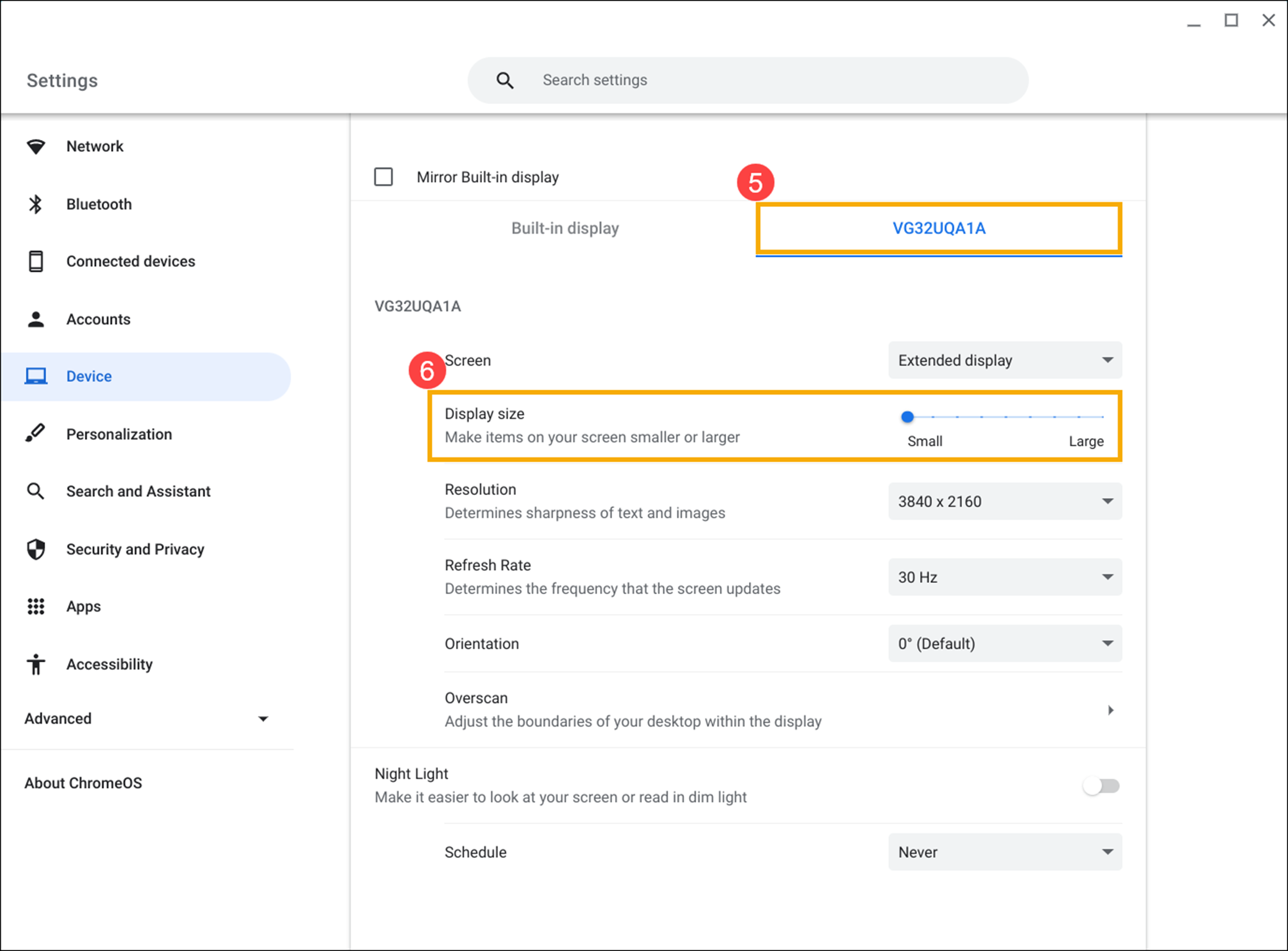
Screen sharpness and refresh rate
If your Chromebook's external display appears too sharp or too blurry, or if the screen refresh rate doesn't meet your requirements, follow these steps:
- Click on the [Status bar]① in the lower-right corner of the screen, then click on [Settings]
 ②.
②. 
- Click on [Device]③, and then click on [Displays]④.

- Select the name of your external display⑤, and in the Resolution and Refresh Rate field, select your preferred options⑥ to adjust text and image sharpness, as well as screen refresh rate.
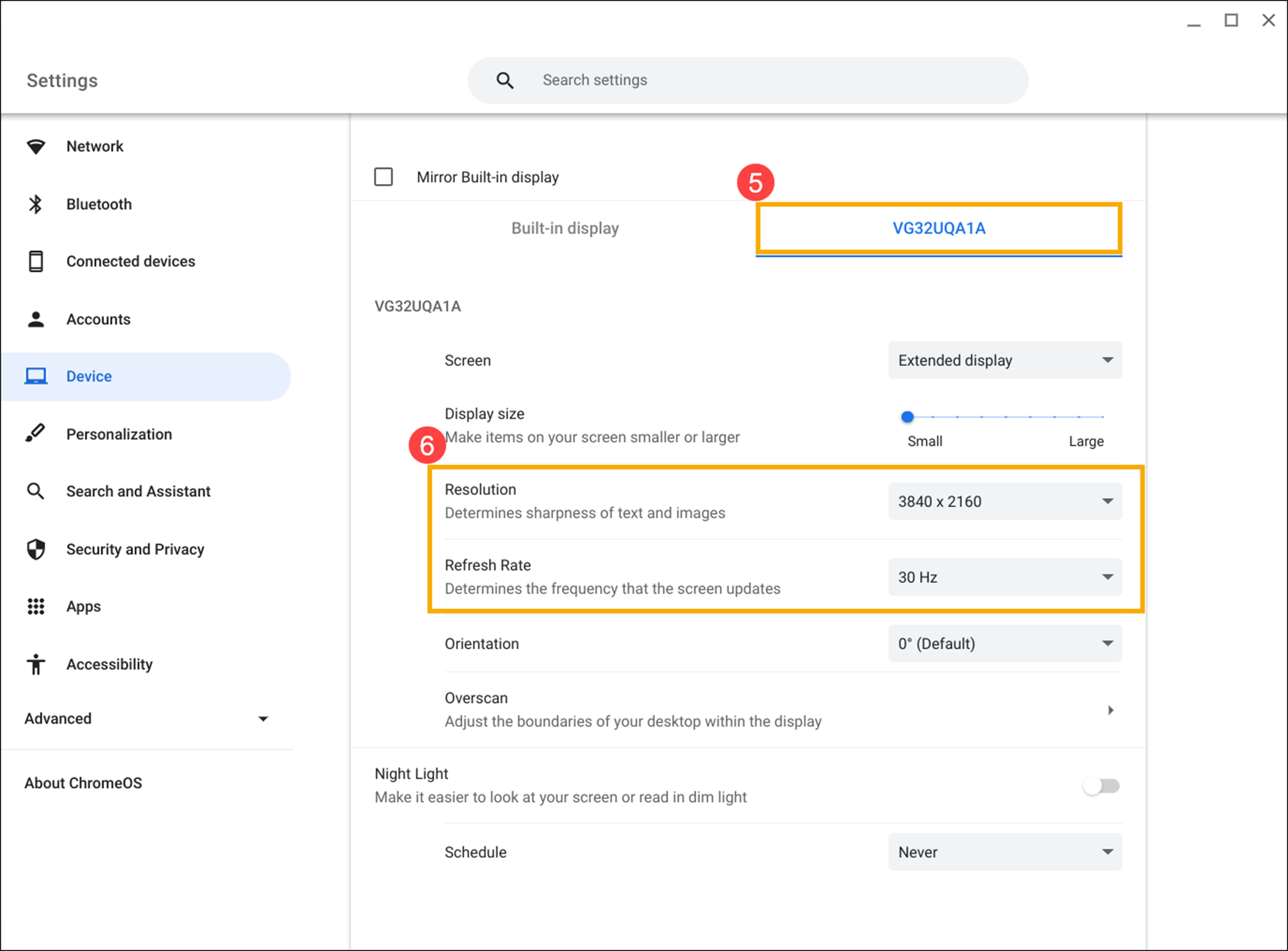
If your Chromebook's external display shows the incorrect orientation, or if you need to change the orientation, follow these steps:
- Click on the [Status bar]① in the lower-right corner of the screen, then click on [Settings]
 ②.
②. 
- Click on [Device]③, and then click on [Displays]④.

- Select the name of your external display⑤, and click on the dropdown menu in the Orientation field⑥. You can adjust the desired screen display orientation.
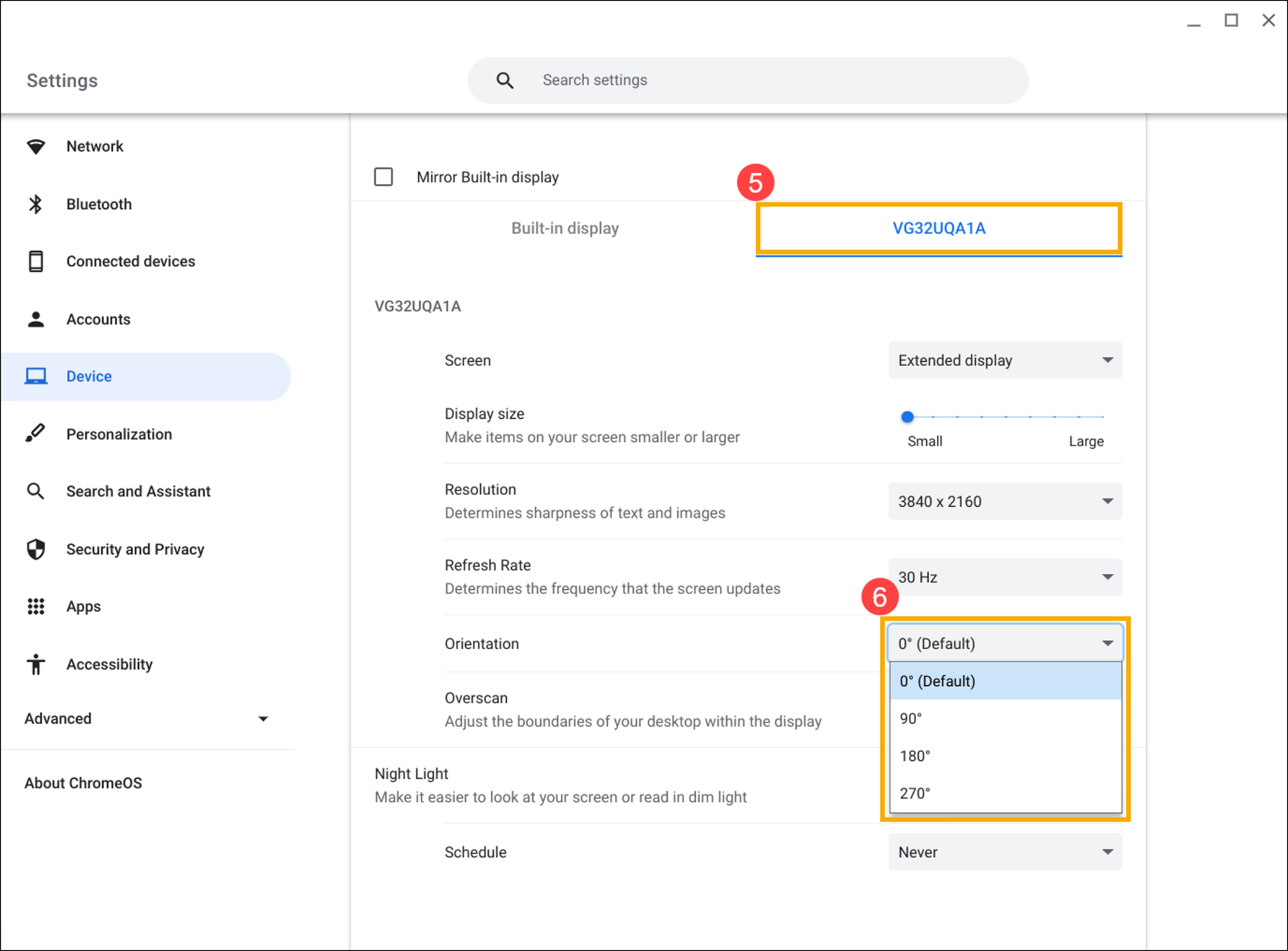
Other issues with external display
If you have other problems with your external display, please try the following steps:
- When you connect your Chromebook and external monitor, you may need to enable "Mirror Display" first for the external monitor to display the screen. Please follow the steps below to enable it:
Click on the [Status bar]① in the lower-right corner of the screen, then click on [Settings] ②.
②. 
- Click on [Device]③, and then click on [Displays]④.

- Check [Mirror Built-in display]⑤ to display the Chromebook screen on the external monitor.
Note: After the screen appears, you can choose whether to continue using Mirror Display as needed.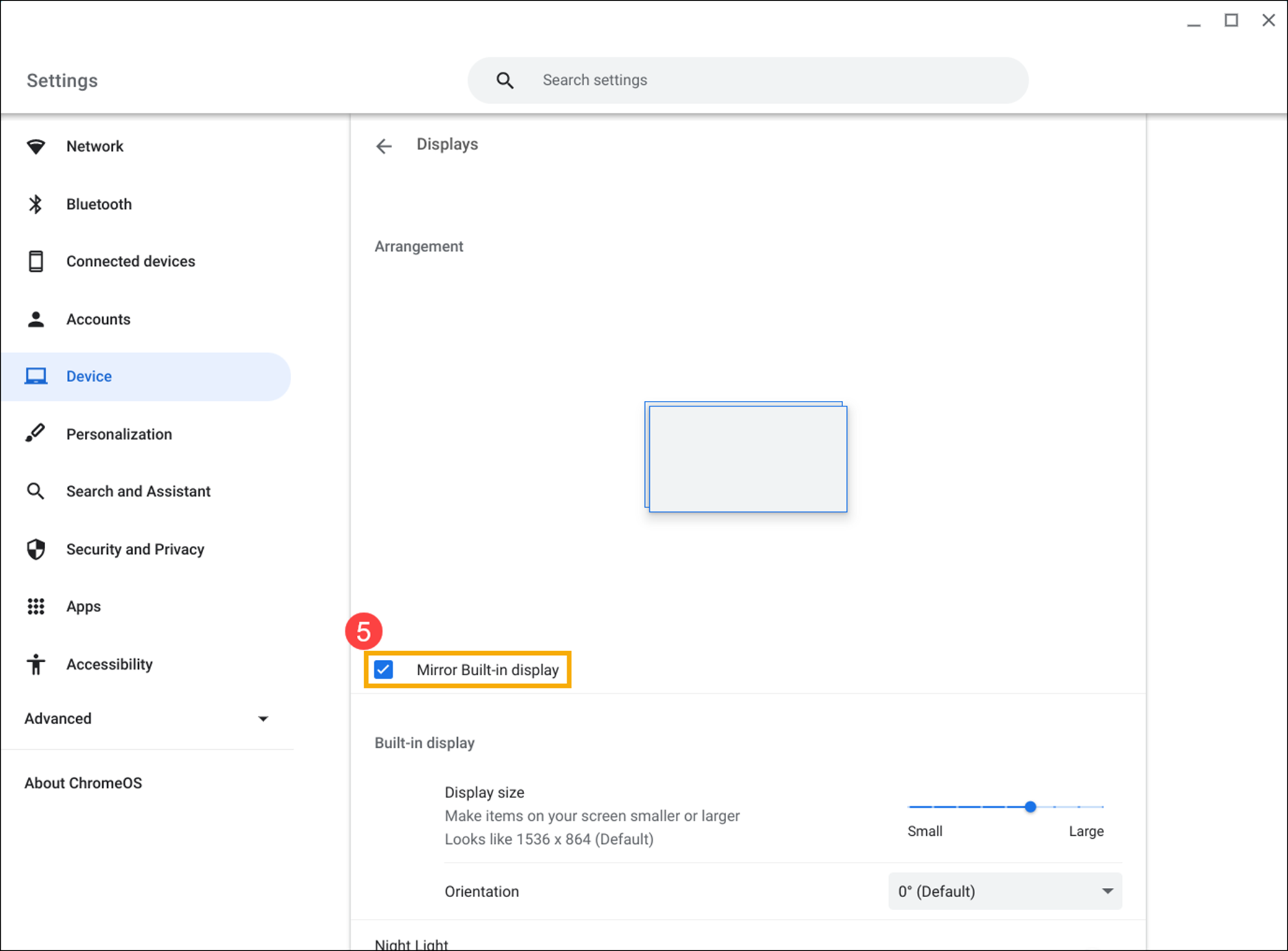
- Restart your Chromebook and the external display. Turn off your Chromebook and the external display, then wait a few seconds before restarting them.
Note: To restart the Chromebook, hold the [Power button] until the device turns off, then turn it on again.
until the device turns off, then turn it on again. - Update Chrome OS. Ensure your Chromebook has the latest version of Chrome OS installed. To check for available updates, refer to this article: Updating Chromebook's Operating System.
- Perform a hardware reset on your Chromebook. Refer to this article for instructions: How to Reset Chromebook Hardware Settings.
- If the above troubleshooting steps have been completed but the problem persists, consider resetting or recovering your Chromebook.
Reset (Powerwash) your Chromebook to factory settings. - Recovery Chromebook operating system.
You can also refer to the Google Chromebook Help on the official website for more detailed information:
https://support.google.com/chromebook/answer/1060909
If your issue remains unresolved, please contact the ASUS customer service center for further assistance.